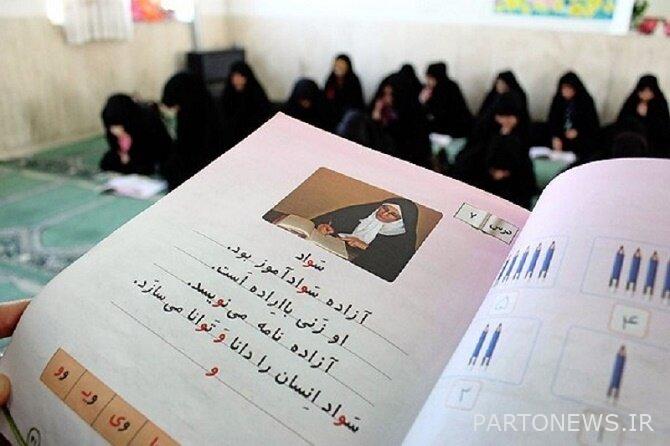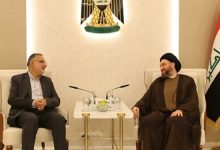Challenges of more than 7 million illiterates in the country and leaving the educated – Mehr News Agency | Iran and world’s news

Mehr news agency; Community group: The key to fighting illiteracy in Iran was laid 87 years ago, and before the victory of the Islamic Revolution, the fight against illiteracy was carried out by Akbar Education Organizations, the Elderly Education Organization, the Adult Education Organization and the National Committee to Combat Illiteracy, the National Literacy Jihad Organization. It was for this reason that by the time of the victory of the Islamic Revolution, according to the census of 1955, out of a population of about 27 million people aged 6 and over, more than 14 million, or about 52% of the population, were illiterate. In addition, the lack of access to education for children in need of education was widespread in Iran. Perhaps this was the reason why the Literacy Movement Organization was formed on January 28, 1980 by the order of Imam Khomeini (RA) so that the teaching of reading, writing, mathematics, and religious education to adults could be pursued extensively and seriously.
Now, after 42 years, we must look at the goals of this organization again. Perhaps before the outbreak of the corona in the country, this review could have proceeded with the view that the purpose of establishing this institution, which was to eradicate illiteracy in the country, had been achieved.
And the view should be followed that: According to the latest UNESCO definition in the Adult Literacy Education Recommendation, including reading and writing skills, cognition, comprehension, interpretation, creation, interaction and arithmetic using printed texts and written sources, as well as the ability to solve problems in a The growing environment is technological and rich in information.
“UNESCO has defined four definitions for literacy, but now the fourth definition is literacy, which means that one can make changes in one’s life and society with what one has learned,” said Shapoor Mohammadzadeh, head of the Literacy Movement Organization. About 500 of our local learning centers operate on this basis.
However, Corona and the dropout rate of those who do not enter the education cycle were warned, although the main demand in this area should still be in the main body of education so that all children in need of education are covered even during this time in Corona. For those who have dropped out of school in these two years and some of whom will not return to the education cycle, there should also be a demand from various education departments, but there may need to be an additional responsibility for the organization for the next 5 years. Defined the literacy movement.
Today, we see widespread coverage of schools throughout the country, and school buildings have reached the most remote villages, and during the Corona era, one of the most important issues from the very first days when virtual education dominated was the lack of access to virtual education infrastructure in Iran. It affected the children of compulsory education. An incident that caused many others to restrict their education.
Official statistics in 1998 said that we had more than 8 million illiterate people in the country and the absolute illiteracy rate (10 to 49 years old) was 2 million 670 thousand with self-declaration, of which 360 thousand were foreign nationals. This was before the corona outbreak in the country.
Shapoor Mohammadzadeh, head of the Literacy Movement Organization, announced at his last press conference that estimates of the country’s average literacy rate at the end of 1999 and the beginning of 1400 now show that the rate has risen to 96 percent for women and 98 percent for men. We also estimate that the literacy rate during this period is 92% for villagers and 98% for urban dwellers.
The head of the Literacy Movement Organization, emphasizing on identifying and attracting the illiterate, said: By the end of 1999, according to estimates, the literacy rate of urban residents is 98% and the literacy rate of rural residents is 96%.
He also announced that 50 percent of the organization’s activities will be for the illiterate and the other 50 percent will be for the illiterate.
He spoke in support of the US Alliance, but said that maintaining some independence was not the answer.
There are currently 10,000 people in the 10-year-old group who are studying in literacy classes.
The need to pay more attention to the return of people to the cycle of illiteracy
But two points still need to be considered: one is the issue of returning to redefining literacy and getting out of the cycle of just teaching literacy to those covered by the literacy movement, and the other is taking responsibility for those in these two years of the cycle. Training remained open by this organization. Because this organization can have more field access to each person in Iran.
Redefining literacy and getting out of the cycle of just teaching reading and writing to people covered by the Literacy Movement Organization and taking part of the responsibility of those who missed the education cycle in these two years by this organization can be issues of interest to the Literacy Movement Organization on the anniversary. To be established
Another issue in the field of literacy today is the issue of people returning to the cycle of illiteracy, which may have been exacerbated by the corona, meaning that people may learn to read and write but due to a lack of environmental incentives. The lack of literacy in daily life in many deprived and rural areas and the lack of tools to promote adult literacy, these people gradually return to the illiterate cycle of society. Previously, if adults were in this circle, now children and adolescents should also be considered in this cycle.
In 1998, the head of the Literacy Movement Organization announced that we decided to transform the Literacy Movement Organization into an Movement and Adult Education Organization. At the same time, we operate adult (night) schools in three categories: public and volunteer schools, distance education centers and vocational schools, which operate under the auspices of the Organization of Schools and Non-Governmental Centers, with a minimum age of 16 and a maximum of 24 years. And at the same time it was not clear whether the opinion of the head of the literacy movement organization is to integrate and expand this section in the movement or another definition of adult education is considered, which seems to be a parallel work in education if the second issue is raised. Will happen. In these two years, of course, less was said about it.
Another important point that should be mentioned on the anniversary of the establishment of the Literacy Movement Organization is how much the literacy output of the literacy movement under the auspices of this organization is achieved.
There are 7.5 million illiterates in the country
The biggest achievement of the Literacy Movement Organization in the years of its establishment was the elimination of deprivation in the field of literacy. Revision of literacy methods and more interaction of this organization with primary and secondary education is the need of today’s society.
Mohammadzadeh says: with the implementation of the general literacy mobilization plan in 1990 and the education of more than 4.1 million people with complete illiteracy during a decade, in 1375 the literacy rate in Iran reached 79.5% (18% increase). This increase in the 2006, 1990 and 2016 censuses continued to 84.6%, 84.8% and 87.6%, respectively, and in the 1400 year estimate, this figure has increased to 90.5%. But unfortunately, our society is still facing about 7.5 million illiterates.
.

